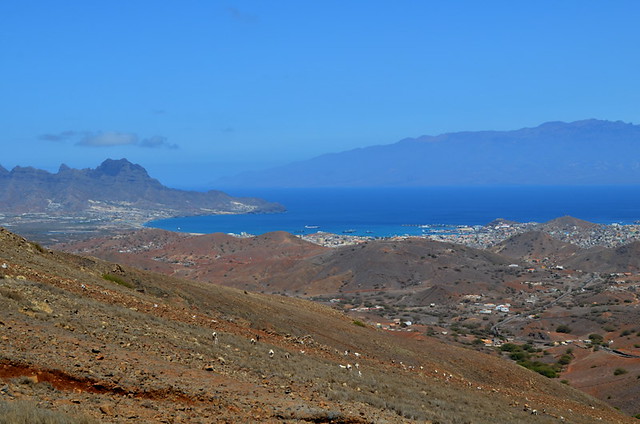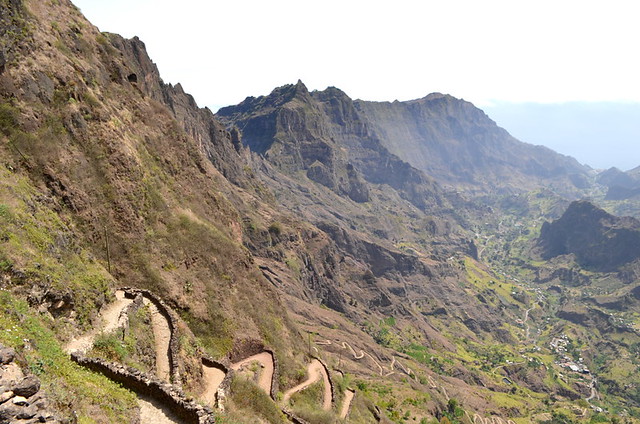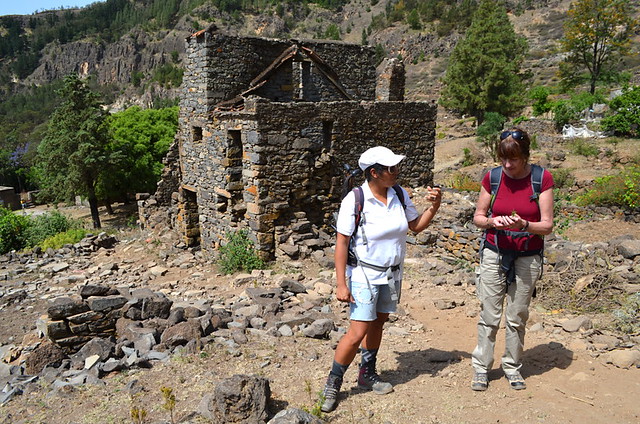Flying into Sal’s international airport and taking a taxi across its barren, featureless plains to reach the southern resort of Santa Maria, you begin to wonder if the hiking boots that are currently acting as thermal insulators to the fire raging in your toes; the rucksack slung across your shoulder, and the suitcase of assorted hiking gear, aren’t possibly your biggest packing faux pas to date.
Luckily, Sal isn’t the final destination for our Cape Verde hiking experience, for that we have to journey onwards, a connecting flight to Sao Vicente and then a ferry to Santo Antão. In the meantime, we let Sal do its job; transition us into the Cape Verdean pace of life, provide a sizeable choice of restaurants in which to enjoy a good meal, and a bank from which to draw local currency. An hour of beach time is just a chill out bonus.
By the time we head back to the airport for our 10pm flight to Sao Vicente, we feel relaxed and ready to see what lies beyond the sun, sea and salt of our landing spot.
Hiking on Sao Vicente
We could opt to just spend the night on Sao Vicente and then take the early ferry the next morning to Santo Antão but that seems a wasted opportunity. Although Sao Vicente is not one of the best islands for hiking, nevertheless it does have some good walking trails which allow us to transition into the challenges ahead on Santo Antão. It also allows us to acclimatise a little to the heat and adjust our pace to suit the conditions. And if that isn’t enough incentive, Mindelo is a brilliant town with great restaurants, a live music scene, and a bustling street life set amongst its colourful, colonial architecture.
We give our hiking boots their inaugural Cape Verde outing on a peak to coast trail that takes us from the top of Monte Verde, the highest point on Sao Vicente at 750m, to the coast at Baía das Gatas. Although the landscape is arid, the views from the summit and virtually all the way around the island as our path winds down and round to the coast, are excellent.
Hiking on Santo Antão
Nothing we had seen since arriving in Cape Verde prepared us for the beauty of Santo Antão. Terraces brimming with oranges, quince, avocado, coriander, manioc, yams and the ubiquitous sugar cane all thrive in the fertile soil, watered by underground springs and the winter rains. It’s a landscape of such lush beauty that it’s hard to keep our eyes on the trail.
Terrain
Most of the routes that we use are along traditional, cobbled paths that provide a network of trails across the islands. Often coated in smaller pebbles and dried strips of cane, the surfaces can be tricky and it takes strong concentration and taut calf muscles to keep from slipping on steep descents. When not on cobbled trails, we traverse rock strewn river beds or dusty, unmade paths.
Routes
On our four days hiking on Santo Antão most of our routes are around the 10km mark which we would normally consider to be little more than a stroll but on Cape Verde with the steep gradients, unrelenting sun and lack of sustained shade, we find that distance to be as challenging, and time consuming as 20km in the Anaga Mountains of Tenerife.
Without exception, the routes are spectacular. Whether we’re winding down from the top of a volcanic basin rim to its floor; traversing the rugged coastal path or walking endless ridges above barren ribeiras dotted in agave spikes, this is the most challenging and rewarding hiking we have ever done, and we’ve done quite a lot.
Equipment to take
Although we saw locals skipping around the cliffs and ribeiras in flip flops, our advice is to wear sturdy, thick soled boots with good ankle support. Everywhere on Santo Antão involves climbing and descending steeply so if you’re someone who regularly walks with sticks, bring them with you. It’s worth packing a pair of knee supports for those descents on hard surfaces which take their toll on joints.
It should go without saying but you’ll need a hat with a wide brim to keep sun off the back of the neck, particularly as you’ll be spending a great deal of time looking down at the path leaving your neck exposed. In sunscreen terms, we opted for factor 50. It might have looked like we’d covered ourselves in white matt paint but it literally saved our skin.
Guided or self-guided?
We normally prefer to go self-guided on our walking routes and have done so across much of Europe but in Cape Verde we were led by experienced local guides supplied by local company Vista Verde and arranged through Archipelago Choice. There are a number of reasons why we would really recommend going with a local guide.
Local guides are fonts of knowledge about the routes, flora, traditions and legends of the island on which they work and they’re happy to recount tales from their own childhood or to chat about anything you care to raise.
Responsible for providing lunch for you, we enjoyed picnics like we’ve never had them before. From Hattie’s home made pasta and rice dishes, to coffee in the woods, and mint tea on Nicolai’s cousin’s shady porch. These are personality lunches that add another dimension to the whole experience of Cape Verde.
Many routes are linear and using a guide means you also get transport to the start and/or end of your walking route. Besides all of that, guiding provides quality employment for Cape Verdeans and we’re all for ensuring that continues and grows.
Hiking on Fogo
To our regret, we didn’t have time to add a trip to Fogo to our itinerary, an omission we hope to rectify in the future.
All our transfers, accommodation, guided walks and travel while in Cape Verde were arranged for us by Archipelago Choice, tailor made holidays to the Azores and Cape Verde.
Andrea (Andy) Montgomery is a freelance travel writer and co-owner of Buzz Trips and The Real Tenerife series of travel websites. Published in The Telegraph, The Independent, Wexas Traveller, Thomas Cook Travel Magazine, EasyJet Traveller Magazine, you can read her latest content on Google+







Nice article. I personally would come back to Cape Verde just for trekking. I think if you’re on a budget, “Rother” series guides are very useful for self-guided treks. I wrote about one recently: https://sunnyshinyportugal.com/2019/11/trekking-in-cape-verde-from-ponta-do-sol-to-igreja-da-cha/